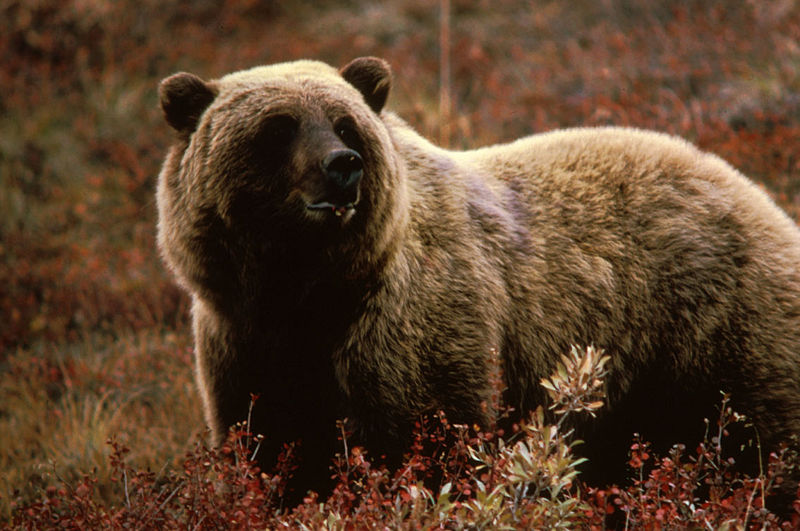We're open daily! View holiday hours
Science News
Wolves Save Bears
August 2, 2013
by Molly Michelson

Top predators (think sharks, lions, wolves) may eat many animals within an environment, but they also keep the ecosystem in check.
This may seem counter-intuitive, but according to science writer Mary Ellen Hannibal, “We need a full complement of species on wild landscapes so that nature can fulfill its whole cycle. It turns out that top predators—the wolf, for example—play an outsize role in keeping the whole system together.”
This was, in fact, the subject of her very excellent OpEd piece in the New York Times last fall entitled, “Why the Beaver Should Thank the Wolf.”
And scientific studies reflect this, too. A study out this week in the Journal of Animal Ecology demonstrates why the grizzly bear should also thank the wolf.
Bill Ripple, Bob Beschta, and their colleagues discovered that the return of wolves to Yellowstone National Park is beginning to bring back a key part of the diet of grizzly bears that has been missing for much of the past century—berries that help bears put on fat before going into hibernation.
“Wild fruit is typically an important part of grizzly bear diet, especially in late summer when they are trying to gain weight as rapidly as possible before winter hibernation,” Ripple says. “Berries are one part of a diverse food source that aids bear survival and reproduction, and at certain times of the year can be more than half their diet in many places in North America.”
Looking at bear scat, the researchers found that the level of berries consumed by Yellowstone grizzlies is significantly higher now that shrubs are starting to recover following the re-introduction of wolves, which have reduced over-browsing by elk herds. The berry bushes also produce flowers of value to pollinators such as butterflies, insects, and hummingbirds; food for other small and large mammals; and special benefits to birds.
When wolves were removed from Yellowstone early in the 1920s, increased browsing by elk herds caused the demise of young aspen and willow trees—a favorite food—along with many berry-producing shrubs and tall, herbaceous plants. The recovery of those trees and other food sources since the re-introduction of wolves in the 1990s has had a profound impact on the Yellowstone ecosystem, researchers say.
Hannibal points out that Beschta and Ripple didn’t set out to study wolves. In an email to Science Today, she says, “They set out to study the health of the Lamar River… But in looking for a cause to explain the degradation of the river, what they found is that super-abundant elk were eating the vegetation down to the roots on the river banks, and the vegetation wasn’t able to ‘recruit,’ or grow up strong and healthy. When wolves were reintroduced to Yellowstone, the vegetation started to recover. Beschta and Ripple and many other scientists documented this and analyzed it, and it turns out that elk change their behavior when wolves are around, and they stay on the move, which gives the vegetation time to recover.”
“Studies like this point to the need for an ecologically effective number of wolves,” Beschta says in a press release. “As we learn more about the cascading effects they have on ecosystems, the issue may be more than having just enough individual wolves so they can survive as a species. In some situations, we may wish to consider the numbers necessary to help control overbrowsing, allow tree and shrub recovery, and restore ecosystem health.”
Beschta’s and Ripple’s work is featured in Hannibal’s Spine of the Continent, a great story of conservation efforts to create wildlife corridors to protect these top predators and the ecosystems that depend on them. Look for more of these stories here in Science Today, and in an Academy exhibit, Life Connected, opening in Spring 2014.
Image: Bobisbob at en.wikipedia